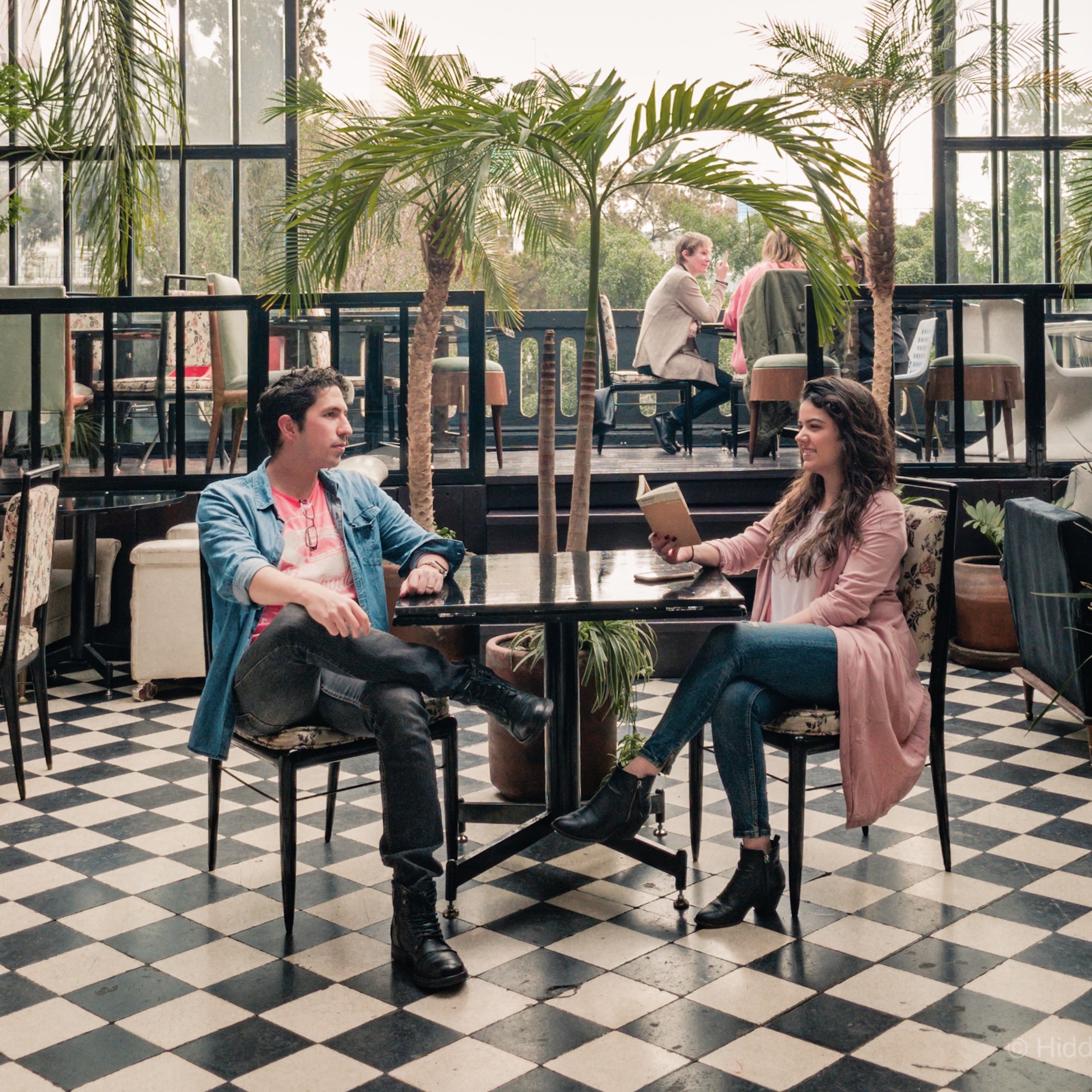
We’ve seen many people advising others to run towards the Sun Pyramid the minute they enter into the archaeological site. But what if we told you that that’s not even the most beautiful sight you’ll get of Teotihuacan…
This pre-Hispanic city was one of the first and most outstanding urban complexes in Mesoamerica, inhabited for 900 years by a very prominent society. After that came the invasion of the Aztecs, who named the land ‘Teotihuacan’, meaning “the city where men transform into gods”, and made it the center of Mexico and the most powerful empire.

A visit to Teotihuacan consists of a 2km walk along the Avenue of the Dead where you can admire pyramids, mural paintings and other administrative/political buildings, while listening to people playing ‘pre-Hispanic melodies’ and making jaguar sounds in their handmade flutes. We bet most of you already know about the Moon & Sun Pyramids, but what about these other off-the-main-route sites?
Quetzalcoatl’s Pyramid
Possibly, the star of the complex. If you enter the premises from Door #1 (the archaeological site has five entrances), this is the first pyramid you’ll encounter.
Once inside the ‘Ciudadela’, the large esplanade that was used as the administrative and political center of Teotihuacan, head straight to the very back and climb up the stairs. You’ll be blown away by this hidden pyramid with its intact stone carvings of Quetzalcoatl’s head, dating back to 150-200 a.C.



Atetelco
A housing complex formed by three sections: White Patio, Red Patio and North Section. Our favorite part was the White Patio, with its three beautifully decorated temples.



Tetila
Another housing complex. Although it doesn’t have floor to ceiling murals as Atetelco, here you can admire different drawings and have a better perspective on how they lived.



Tepantitla
This complex was inhabited by leaders or priests of Teotihuacan. Its value rests on a section called ‘Tlalocan’, a representation of Tláloc’s paradise, where people are playing, dancing, singing and cultivating the land with the goods that Tláloc himself is sending from above (he’s the one with a tree on top).


Quetzalpapálotl Palace
To the left of the Moon Square, you’ll find this building that acted as an elite residence in 450 a.C. Pay attention to the stone pillars that surround the central patio, with quetzal and owl carvings, and the mural paintings, exclusive to this building.

Moon Pyramid
If you have to choose between climbing the Sun Pyramid or the Moon one, choose this. It’s, in our opinion, the best view of Teotihuacan –the vanishing point at the end of the Avenue of the Dead will give you the perfect picture– and it has fewer steps (major bonus!).



Sun Pyramid
The biggest of its era, and one of the most important buildings in Mesoamerica. Contrary to its name, new interpretations and findings –river flowing around its base, infants buried in each corner, which was a common sacrifice for this god, and the cave underneath the construction– suggest that this was in fact a temple dedicated to Tláloc, god of water.



La Gruta
There are tons of restaurants surrounding the site, but this one, near Door #5, stands out for its ambiance. A real cave adapted as a restaurant. The food isn’t excellent and it’s slightly overpriced ($400mxn per person), but it’s not bad –we tried their chicken with pipian– and the place is truly unique.
If you have claustrophobia, don’t worry. There’s a big gap that allows the air to flow normally and makes it feel more ‘open’, and there are tables near the entrance that overlook the underground portion.


Tips & Useful Information
Important!
-Pack a bottle of water, a hat, and comfortable shoes, and slather yourself up in sunscreen.
-No tripods are allowed.
-There are no camera fees, unless it’s a professional camcorder.
-Avoid holidays and weekends (it can get really crowded –long lines to climb the pyramids) and be there by 9:00 am, so you can have the place to your own.
Entrance fee: $70 mxn per person. The site opens from 9:00am to 5:00pm.
Buy your ticket at one of the five doors and hold on to it, because this will give you access to all pyramids, museums and housing complexes without any extra fees. The ticket is 24hrs, so you can go in and out as many times as you like.
How to get there:
By car- the best way if you want to visit all the places in one day. Instead of walking 2km, you can park in and out in every entrance (the complex has 5 in total) and save a lot of time. Plus, you can easily move around the town and visit Tetitla, Atetelco and Tepantitla, which are outside the archaeological site.
From Mexico City there’s only one toll booth that costs $75mxn, and the parking lot is $50mxn.
By bus- the cheapest way if you don’t have a car. Take the metro or a taxi to ‘Central de Autobuses del Norte’ and near the Gate 8, buy a ticket in the stall ‘Autobuses Teotihuacan’ (their logo has a blue pyramid). Buses leave every 15 minutes, from 6:00 am to 10:00pm.
The single ride per person costs $50mxn. The bus leaves you at Door #1, where Quetzalcoatl’s pyramid rests, and picks you up in the same place.
Guides
Every ‘certified’ guide we asked wanted to charge us $750- 1900mxn, depending on whether we wanted the basic, the intermediate or the complete tour. A total scam, if you ask us.
Our suggestion would be to do it on your own. Information is available in English at every site (this is the information we heard guides repeating, anyway), plus you can also get a guide book at the stores along Door #2 for only $90mxn.
Site’s Museum
Skip it, especially if you are visiting by foot. It’s a long way and it’s poorly curated –nothing that you haven’t seen in the sites above and in Mexico City’s National Museum of Anthropology.
Mural paintings
If you don’t have time for Tetitla, Atetelco and Tepantitla, at least head to ‘Museo de los Murales Teotihuacanos Beatriz de la Fuente’ (near Door #3). It’s a small collection of some of the mural paintings found in the premises.
Pyramids
Keep in mind that the access to the pyramids closes when it starts to rain; don’t leave them till the end.

